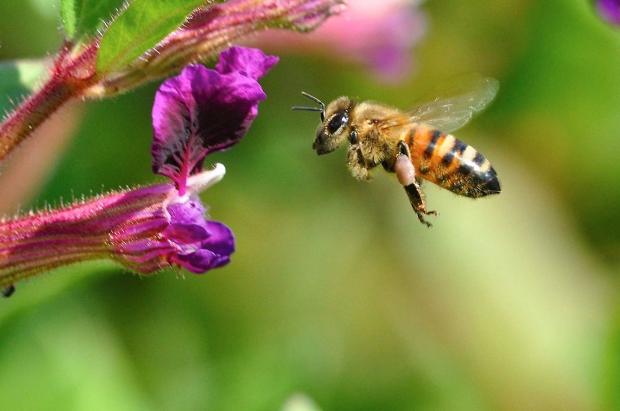
(Courtesy Jim Eklund, Soil Management Research, USDA)
Losses of managed honeybee colonies from all causes were 23.2 percent nationwide for the 2013-2014 winter, according to the annual survey conducted by the Bee Informed Partnership and the U.S. Department of Agriculture (USDA).
This represents a drop in mortality compared to the 30.5 percent loss reported for the winter of 2012-2013 and compared to an eight-year average of winter losses of 29.6 percent.
Previous surveys found total colony losses of 21.9 percent in 2011-2012, 30 percent in 2010-2011, 33.8 percent in 2009-2010, about 29 percent in 2008-2009, about 36 percent in 2007-2008, and about 32 percent in 2006-2007.
Losses remain above the level that beekeepers consider economically sustainable. This year, almost two-thirds of the beekeepers responding to the survey reported losses greater than the 18.9 percent level that beekeepers say is acceptable.
The winter losses survey covers the period from October 2013 through April 2014.
“Yearly fluctuations in the rate of losses like these only demonstrate how complicated the whole issue of honeybee health has become,” said Jeff Pettis, co-author of the survey and research leader of the Agricultural Research Service Bee Research Laboratory in Beltsville, Maryland. “Factors such as viruses and other pathogens, parasites like varroa mites, problems of nutrition from lack of diversity in pollen sources, and even sublethal effects of pesticides combine to weaken and kill bee colonies.”
There currently is no way to tell why the bees did better this year, according to both Pettis and Dennis vanEngelsdorp, a University of Maryland assistant professor who is the leader of the survey and director of the Bee Informed Partnership.
Among the leading causes of colony losses self-reported by beekeepers in past annual surveys are queen failure, poor wintering conditions, and damage by varroa mites.
There is growing consensus among researchers that one of the largest contributors to poor colony health and colony losses is the varroa mite, an Asian bee parasite first found in the United States in 1987.
“What is clear from all of our efforts is that varroa is a persistent and often unexpected problem,” said vanEngelsdorp. “Every beekeeper needs to have an aggressive varroa management plan in place. Without one, they should not be surprised if they suffer large losses every other year or so.
“Unfortunately, many small-scale beekeepers are not treating and are losing many colonies. Even beekeepers who do treat for mites often don’t treat frequently enough or at the right time. If all beekeepers were to aggressively control mites, we would have many fewer losses.”
The survey results are based on information self-reported by beekeepers. About 7,200 beekeepers who managed 564,522 colonies in October 2013, representing 21.7 percent of the country’s 2.6 million colonies, responded to the survey.
The survey results were reported in a press release from USDA written by Kim Kaplan on May 15.






Leave A Comment